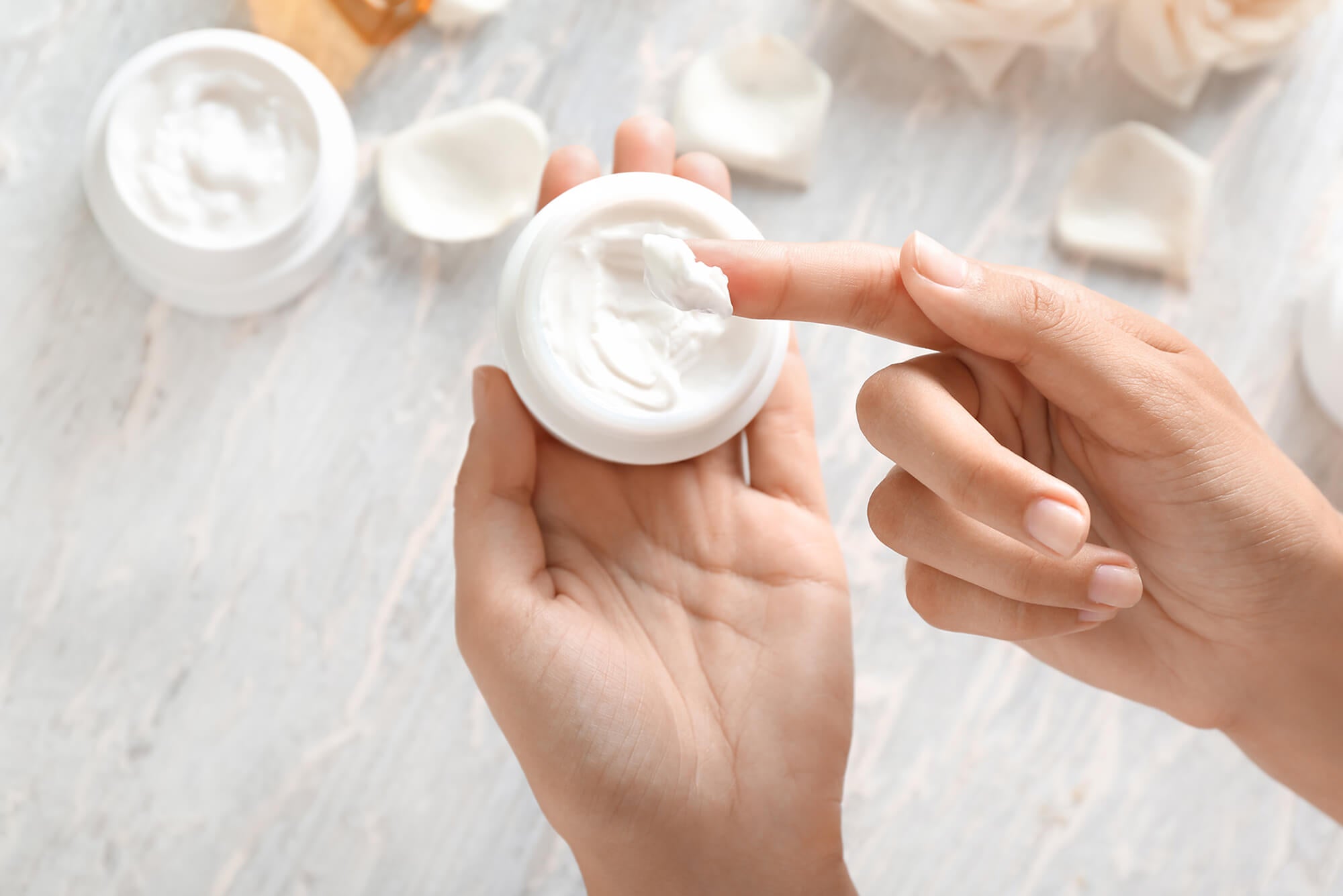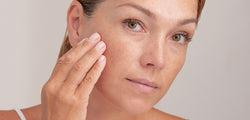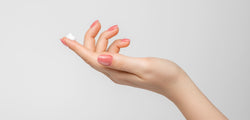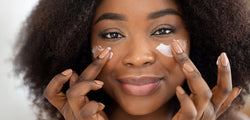
Hyaluronic Acid And Retinol. Can I use them together?
Table of Contents:
Truth be told, the do's and don'ts of mixing skincare ingredients have really come a long way since the days when we used to rely on a bunch of myths, half-truths and misconceptions to bring the best out of complexion. Now, dermatologists and skin care experts use anecdotally and scientifically-proven ingredients to optimize the potency of some of the common A-listers that have dominated this niche for ages. Hyaluronic acid and retinol are an excellent example of this combination that has taken the beauty industry by storm in the last couple of years.
You see, hyaluronic acid is known very well for its unmatched ability to hydrate the skin and retain moisture unabatedly. If anything, there is solid research that shows how hyaluronic acid is capable of holding back more than 1000 times its net weight in water droplets. And considering that your skin and complexion look best when amply hydrated, you can begin to see why hyaluronic acid is a core ingredient in most premium skin care products on the market.
Retinol, on the other side of the spectrum, is renowned for its propensity to reduce the visibility of fine lines, wrinkles and other tell-tale signs of aging. It is exactly what you need if you are looking for a way to tap into the goodness of the fountain of youth. Hence, the big question remains, "Can you use hyaluronic acid with retinol"?
Well, if you have been agonizing with the dilemma of combining these two next-level skin care ingredients and constantly asking yourself, "Can I use hyaluronic acid with retinol"? It is time to rest easy. Not only is it safe and OK to use retinol with hyaluronic acid but it is also quite recommended and advisable to do so. In fact, combining these two ingredients has been shown to be helpful in reducing the intensity of some of the side effects of using retinol such as unending irritation and dry skin.
What Is Hyaluronic Acid?

Despite its artificial-sounding name, hyaluronic acid is one of the few naturally-occurring substances that are responsible for keeping your joints, skin and other closely-related connective tissues healthy and well-hydrated. Your body actually produces hyaluronic acid by itself. The human body has around 15 grams of pure hyaluronic acid at the zenith of youth. And approximately 50% of this is in your skin.
That being said, your skin's content of hyaluronic acid tends to degrade and reduce as you rack the years and blow more birthday candles. If anything, this is one of the contributory factors behind the appearance of wrinkles and smile lines as we age. In short, if you can find a reliable and safe way of replenishing your skin's lost hyaluronic acid content, then you can stave off aging for a significant part of your natural life.
The good news is that hyaluronic acid in skincare is not that hard to find. True to this, you can find this compound in anti-aging creams, moisturizers, anti-wrinkle rubs and other miscellaneous skin care emollients. In addition to these topical hyaluronic acid gels, it is also administered as an injectable filler. And this form is the one that is commonly used to fill in fine lines, wrinkles, scars and other common blemishes that are the result of skin damage or age-related deterioration.
What Is Retinol?

Retinol, which is a derivative of Vitamin A, is a fat-soluble nutriment that plays a critical role in a variety of important physiological processes in the body. Your body, for instance, depends on retinol to oversee a number of life-sustaining processes like cell reproduction and vision. And as a crucial skin care ingredient, vitamin A assists in the maintenance, repair and rejuvenation of your skin. Hence, to answer the question, "What is retinol used for"? It is a very important vitamin as far as proper wound healing goes.
There's plenty of research and anecdotal evidence that shows how products that contain retinol can improve the overall appearance of one's skin and lessen the visibility of conspicuousness of aging-related signs such as fine wrinkles and crow's feet.
To add on to the answer to the question of, "What does retinol do for your face"? There's dermatological evidence that retinol-based creams are also effective at preventing, treating and managing acne. A retinoid treatment, if not for anything else, can help unclog skin pores thereby allowing other medicated gels and creams to work more effectively. They are also believed to reduce the occurrence of acne breakouts by stopping dead cells from clogging and blocking pores which could exacerbate zits and pits. Finally, by reducing the incidence of breakouts and clearing the acne itself, they play a critical role in reducing the visibility of acne scars.
Other serums, anti-aging creams, and other skin care emollients that have retinol as one of the major active ingredients are available in your nearest department store, pharmacy, supermarket or drugstore. Other variants of retinol such as retinoic acid (tretinoin) are only available with a written prescription and are said to have a stronger effect on one's skin. Hopefully, you can now get to grips with the gravity of the answer to the question of, "What does retinol do for your face"?
Can You Use Hyaluronic Acid & Retinol Together?
Indeed, according to leading skin scientists, a combination of retinol and hyaluronic acid is not just safe but recommended too. That also means that using skin care brands that contain both of these two heavy hitters should not result in adverse side effects or interactions. So if you are racking up your mind wondering, "Can I use hyaluronic acid with retinol?", then you should rest easy knowing that retinol and hyaluronic acid are among the most common combinations in the beauty industry.
There are several reasons for this - the most significant one being, hyaluronic acid helps to temper and neutralize the otherwise adverse side effects on using retinol in people with sensitive skin. You see, retinol is known for its wherewithal to cause irritation, dryness, and skin flaking. Tretinoin, for instance, is known for precipitating a temporary "purge" where you can experience acne-prone, dry and super irritated skin after beginning treatment. And although most of these side effects are only temporary and clear within a couple of weeks, they are still annoying and inconvenient enough to dissuade some people to steer clear of retinol-containing skin care products.
However, adopting a hyaluronic acid moisturizer at around the same time as you start your tretinoin or retinol treatment can go a long way in quenching your skin to prevent or at least lighten the dehydrating impact of the vitamin A derivative.
How to Use Hyaluronic Acid With Retinol?

When it comes to using retinol and hyaluronic acid together, there are several steps and pointers that you need to be aware of to extract the most of the combination. First of all, you have to solve the conundrum of whether you are to use retinol or hyaluronic acid first. In this case, you would be better served with applying the retinoid complex first and following the following steps as closely as you can.
Even before you start to apply anything, make sure you wash your face with ample warm water using a gentle and mild cleanser. Good ol' soap also works as good if not better.
- Pat down your face gently using a clean and soft towel. Take extra care to avoid rubbing your skin vigorously as this kind of irritation can cause the skin to erupt or precipitate a bad case of acne in the future. Besides, rubbing your skin habitually can also accelerate premature aging and fine lines.
- Squeeze a reasonable amount of retinol-based cream or, in this case, prescription retinoid on your palm and apply it meticulously on your face. At this stage, it is important to focus more on areas that are more affected by the vagaries of age such as sun spots, wrinkles and crow's feet. Spot treatment of zits and pits can also be done at this juncture.
- Massage the retinol cream lightly on your face. Again, do not rub or buff it vigorously. What you want, instead, is to apply it using feather light strokes and then give it between two to three minutes (before each swipe) for the emollient to be absorbed by the skin and blend in harmoniously. Nonetheless, scrub away any extra cream that is left on your palm or finger tips before proceeding to the next step.
- Wait at least half an hour for the retinol cream to settle and seep into the skin pores before attempting to apply hyaluronic acid-based moisturizer. This should give the cream plenty of time to soak your face thoroughly and assimilate the active ingredient as deeply as possible.
- Only after you are certain that the skin has absorbed the active ingredient should you start applying the moisturizer with hyaluronic acid and retinol. Speaking of which, it pays to follow the application instructions that come with the moisturizer that you are about to apply.
That being said, you can always skip this hassle by going for products with retinol and hyaluronic acid directly. A good example of this one is MaryAnn's Retinol Cream that makes an excellent application of this vitamin A derivative in giving its users an picture-perfect, pimple-free, youthful-looking complexion.
In Closing
Products with retinol and hyaluronic acid can add science-based, practical and real benefits to your skin care regimen. It's almost akin combining the best of two worlds. On one hand, hyaluronic acid is fantastic for hydrating and moisturizing the skin and, on the other, retinol is a highly-acclaimed anti-aging compound that can delay the onset of fine lines, wrinkles and age spots considerably. Combining these two in a consistent and regular fashion can really go a long way in building up an attractive complexion that can defy the usual extremities of pollution, passage of time and acne.
Make sure to follow the above instructions closely as possible should you decide to use products that contain each of the active ingredients separately.













